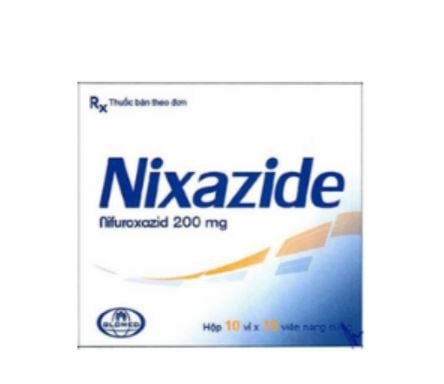This is an automatically translated article.
The article is professionally consulted by Master, Doctor Phan Thi Cam Van - Neonatologist - Pediatrics - Neonatology - Vinmec Danang International General HospitalMeconium ileus is a small bowel obstruction caused by abnormally thick meconium filling the intestinal lumen. This usually occurs in the first 15 days after giving birth. Meconium bowel obstruction can cause dangerous complications for the baby. Therefore, if there are signs of the disease, it is necessary to diagnose and treat the child early to help the child recover quickly.
1. What is Meconium Bowel Obstruction?
Meconium ileus is caused by meconium sticking to the mucosa of the terminal ileum. The adhesion of meconium is by mucus in the exocrine glands of the body such as liver, pancreas, bronchi, sweat.
Most children with meconium ileus have cystic fibrosis (CF). This phenomenon causes the fluid and mucus in the body to be thicker than usual and further increases the chance of meconium getting stuck in the ileum. About 1 in 5 newborns will develop cystic fibrosis and cause meconium obstruction. Some babies with meconium ileus will have additional bowel problems such as a hole in the bowel.
Some other children have a blockage in the colon (large intestine) called a meconium knot. This symptom can occur in babies with small left colon syndrome. This means that the end of your baby's colon will be smaller than normal. Small left colon syndrome often occurs in babies whose mothers have diabetes or gestational diabetes.
Some symptoms of meconium ileus in babies:
Not passing the first stool (meconium) Green vomiting (because it contains bile which is a liquid made in the liver to help digest fats) Swollen abdomen (visible soon after birth) In addition, your baby may experience some more serious symptoms: abdominal swelling, pain, inflammation, or breathing problems because pressure from the abdomen keeps the lungs full of air, or the intestines may appear perforated...

Không đi ra phân su cần báo bác sĩ ngay
2. Diagnosis of meconium bowel obstruction
In some cases, a prenatal ultrasound may show a blocked bowel. The doctor will then monitor your baby's condition with monthly ultrasounds to see if there are any abnormalities.
The newborn will be examined by the doctor by pressing on the abdomen to receive a ring of small intestine filled with meconium. If needed, the baby will have an abdominal X-ray so that the small bowel loop can be seen. The X-ray results help the doctor see an image of the intestines and see if there is gas mixed with the meconium.
In addition, your baby may be tested using X-rays and contrast material inserted into the rectum. From there, your baby's large intestine can be viewed and can be checked to see if the colon is smaller than normal and for an obstruction near the end of the small intestine.
In addition, when a baby is diagnosed with meconium obstruction, it is necessary to check for cystic fibrosis syndrome.

Siêu âm sàng lọc trước sinh có thể phát hiện bất thường
3. Treatment of meconium bowel obstruction in infants
Treatment of meconium bowel obstruction in infants will be based on the specific condition of the patient to have an appropriate treatment regimen:
Conservative treatment: Indicated for children with a definitive diagnosis of intestinal obstruction meconium and no complications. The doctor will insert Gastrografin into the colon and watch through a monitor until the solution passes through the small intestine containing meconium. Then, douche slowly for 15 minutes. Check back in 12-24 hours. Along with douching, the doctor will prescribe intravenous fluids. Continue injecting acetycysteine through the thick tube for 5 days.
Surgery: This method will be indicated for children with complications of meconium ileus such as intestinal perforation, volvulus, or failure of conservative treatment or possibly undiagnosed disease. The doctor will open the abdomen midline above the navel. Next locate and remove the loop of bowel containing meconium out of the abdomen, and resect the loop containing the meconium. Then place the catheter on the bottom end of the meconium-free pump. Finally, the doctor will suture all the way to the intestine.

Điều trị tắc ruột phân su ở trẻ sơ sinh bằng phẫu thuật ngoại khoa
When a child shows signs of meconium bowel obstruction, parents can take the child to Vinmec International General Hospital for examination, diagnosis and treatment. Here, there is a team of well-trained pediatricians with high technical qualifications, rich experience in the treatment of diseases of infants, children and children under 16 years old. Vinmec is equipped with a system of modern and advanced medical supplies and professional service quality that will support high efficiency in diagnosis and treatment of patients.
For detailed advice, please come directly to Vinmec Health system or book online HERE.
Recommended video:
Instructions for cleaning the umbilical cord for babies
SEE ALSO:
Identify signs of intestinal obstruction in children Intestinal obstruction in infants: What you need to know Does intestinal obstruction require surgery?













